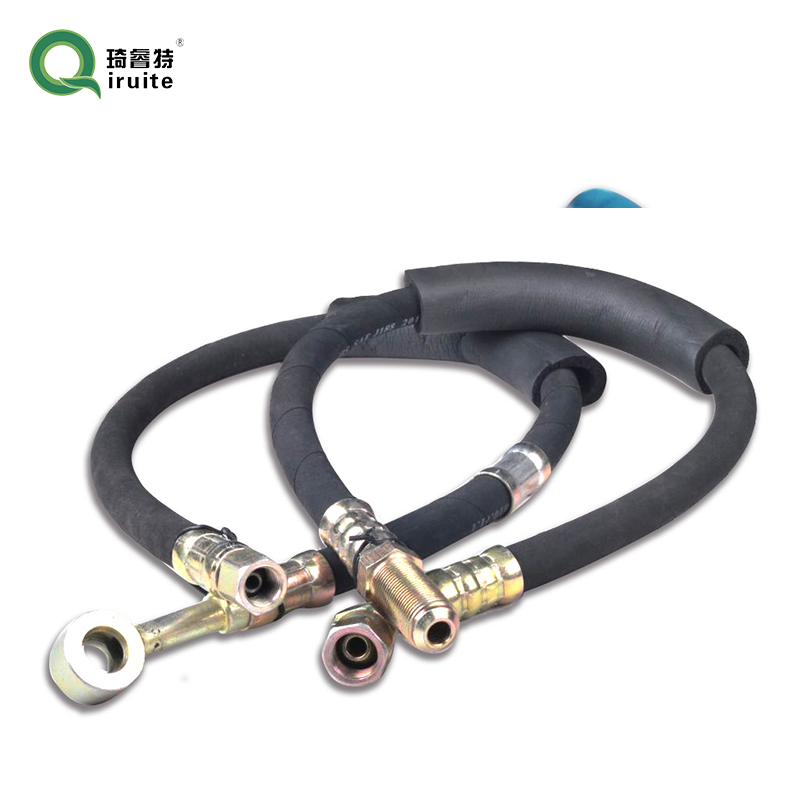Signs of a Failing Power Steering Hose and How to Replace It
Understanding Bad Power Steering Hoses Signs, Causes, and Solutions
Power steering is a vital system in modern vehicles, allowing for easier and more responsive steering. However, like any other car component, power steering systems can develop issues over time, primarily due to the failure of the power steering hose. This article will explore the signs of a bad power steering hose, the causes of such failures, and the steps you can take to address issues related to it.
Recognizing the Signs of a Bad Power Steering Hose
Identifying a failing power steering hose early on can save you from more extensive repairs down the line. Here are some common signs that indicate your power steering hose might need attention
1. Fluid Leaks One of the most evident signs is the presence of power steering fluid on the ground where your vehicle is parked. This reddish or amber fluid is a key indicator that your power steering hose may have a crack or a break.
2. Difficulty Steering If you start to notice that your steering has become increasingly stiff or unresponsive, it may be an indication that the power steering hose is not delivering fluid effectively to the steering mechanism.
3. Whining Noise A whirring or whining sound when turning the steering wheel can indicate that air is entering the power steering fluid. This usually happens when there is inadequate fluid in the system, often due to a leak in the hose.
4. Foamy Fluid When checking the power steering fluid reservoir, if you notice foamy fluid, it could be due to aeration, which often results from fluid leaks in the hose.
5. Burning Smell If the fluid leaks onto hot engine components, it can create a burning smell, indicating that immediate attention is required.
Causes of Power Steering Hose Failure
Understanding the causes behind a failing power steering hose can help prevent future issues
. Here are some common reasons1. Wear and Tear Over time, hoses can become brittle and develop cracks due to exposure to heat, oil, and other elements. Regular wear and tear are natural as vehicles age.
2. Heat Damage Power steering hoses are typically made from materials like rubber or synthetic compounds that can degrade when exposed to excessive heat, leading to deterioration and eventual failure.
bad power steering hose

3. Corrosion If the power steering fluid is contaminated or if the hose is damaged, it can lead to corrosion. This is particularly a concern for metal components of the steering system, which can affect the integrity of the hose.
4. Poor Installation If a power steering hose was not installed correctly by a mechanic, it may lead to unnecessary stress or damage, causing it to fail prematurely.
5. Excessive Pressure If there's a buildup of pressure in the power steering system, it can exceed the hose’s capacity, resulting in leaks or ruptures.
Solutions and Preventive Measures
If you suspect that your power steering hose is faulty, it’s essential to take prompt action to prevent further damage to your steering system. Here are some steps you can take
1. Inspect Regularly Regularly inspect the power steering hose for signs of wear, leaks, or other damage. Look for any wet spots or fluid pooling underneath your vehicle.
2. Check Fluid Levels Regularly check your power steering fluid levels and top off as necessary. If you find that you're frequently adding fluid, it may be time to investigate the hose for leaks.
3. Professional Inspection If you notice any symptoms of a bad power steering hose, it’s best to consult with a professional mechanic. They can conduct a thorough inspection and recommend whether you need a replacement.
4. Use Quality Parts When replacing a power steering hose, ensure you choose high-quality parts from reliable manufacturers. This can prolong the life of your vehicle's steering system.
5. Regular Maintenance Make sure your vehicle receives regular maintenance checks, as this can help catch potential problems before they become significant issues.
Conclusion
A bad power steering hose can lead to a reduction in vehicle performance and safety. By recognizing the signs of failure and understanding the causes, you can take proactive measures to maintain your power steering system effectively. Remember, regular inspection and timely repairs will help ensure that your vehicle continues to handle smoothly on the road. Don’t overlook these crucial components—your car’s steering system depends on them!
-
Ultimate Spiral Protection for Hoses & CablesNewsJun.26,2025
-
The Ultimate Quick-Connect Solutions for Every NeedNewsJun.26,2025
-
SAE J1401 Brake Hose: Reliable Choice for Safe BrakingNewsJun.26,2025
-
Reliable J2064 A/C Hoses for Real-World Cooling NeedsNewsJun.26,2025
-
Heavy-Duty Sewer Jetting Hoses Built to LastNewsJun.26,2025
-
Fix Power Steering Tube Leaks Fast – Durable & Affordable SolutionNewsJun.26,2025

